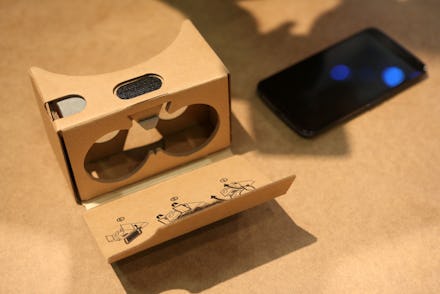Virtual Reality Is Giving Doctors a Chance to Practice Life-Saving Surgery on Infants

In 2015, four doctors in Miami delivered a Christmas miracle for one set of parents with the help of a Google Cardboard headset, according to CBS Miami.
Two Minnesota parents sought the help of doctors at Nicklaus Children's Hospital in Miami to save their 4-month-old daughter, after other doctors had brushed off her case as inoperable. Teegan Lexcen was born with only half her heart and one lung. To save Lexcen, doctors scanned her heart and lungs, uploaded the images onto a smartphone and viewed them through Google's Cardboard virtual reality headset in preparation for the surgery. The images gave the surgical team an opportunity to look at Lexcen's heart tissue in 3-D as a means for planning how to conduct the actual surgery.
In the end, Lexcen's seven-hour surgery was a success and the use of virtual reality was credited as a key part of its favorable outcome.
Though heartwarming, Lexcen's surgery is only a one-off case. The larger medical community is far from certain about whether virtual reality can guarantee better surgical results than technologies that are already available, and it will take dozens of other cases like Lexcen's for the benefits of virtual reality to be accepted.
"I guess the question is: Would the baby's outcome have been any different without it?" Dr. Jason C. Fisher, a pediatric surgeon and physician informaticist at NYU Langone Medical Center asked Mic. For instance, he said that 3-D printed models are already proving valuable as tools for planning surgeries, and there are still other technologies for scanning and viewing 3-D medical scans.
"I think what we really want to see to know that virtual reality is something that is a) here to stay in surgery, and b) something worth investing in, is will this technology improve outcomes?" Fisher told Mic. Fisher is no skeptic. The self identified "computer guy" has lots of hope for the future of VR in medicine.
But it's not 3-D visualizations that have him excited, it's the potential for real-time virtual reality surgeries. Fisher envisions a headset he can wear during surgery that will help him see inside the organ he wants to operate on. For instance, let's say he needs to remove a tumor from a liver; with this theoretical headset he could see all the veins and blood vessels and where the tumor is situated.
"You're superman! You can see through the liver rather than having to make cuts and get into bleeding and do all these things, and that is where I think that technology can make us into superhumans. And that, I think, is going to be a real game changer," Fisher told Mic. "But it would be speculative for me to say that anything like that is being developed."
More immediately, virtual reality might be used as a complement to 3-D printed models, allowing doctors to have a more comprehensive view of a patient's insides.
Though it will take many more cases like Lexcen's and likely significant advancement of the technology before the medical community starts adopting it more widely, Fisher hopes that virtual reality will become more prevalent in clinical settings within the next couple of years. He thinks academic institutions like NYU Langone Medical Center that are actively testing medical innovations in clinical settings will also play a big role is cultivating use cases for virtual reality.
"I think the time frame with these sorts of things are so unpredictable but I'd like to think that within a few years we're going to have actually real valid uses that are more than just one off kind of stories," Fisher said.